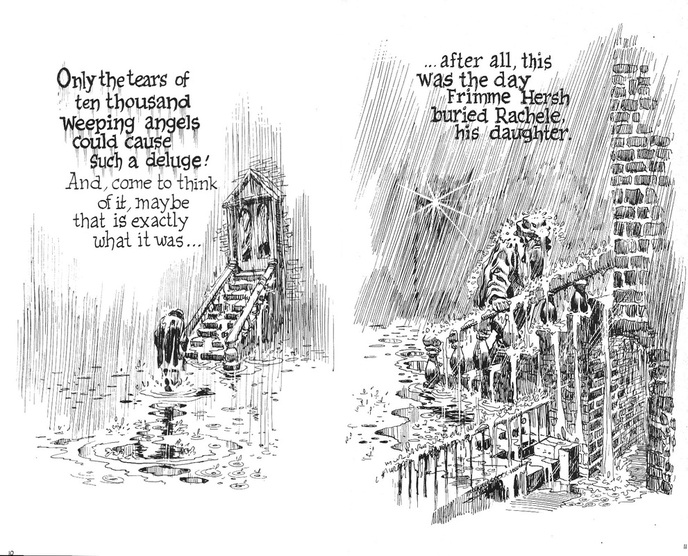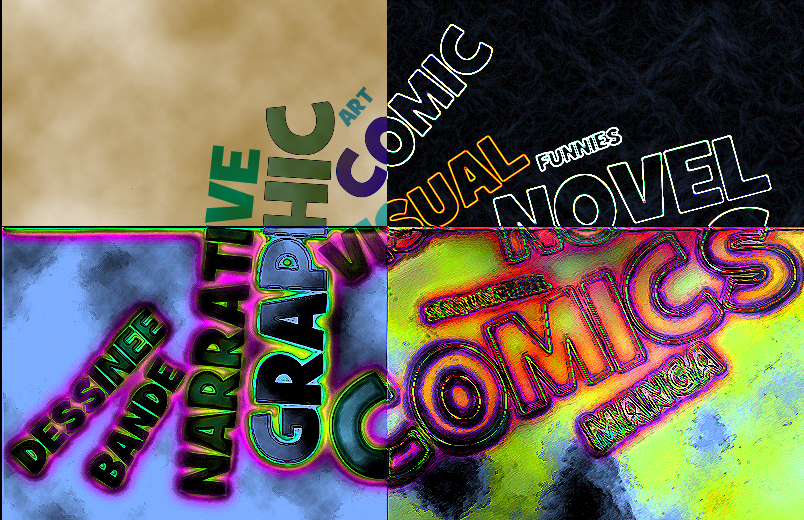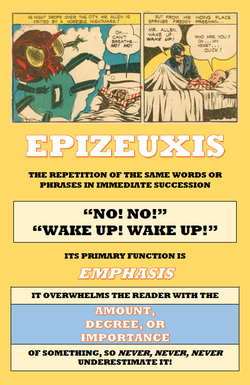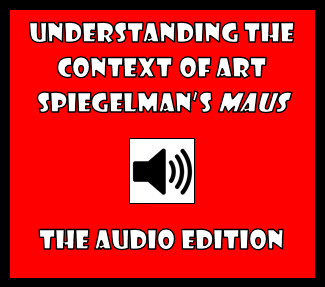Why having some (etymological) perspective is a good thing... A subject that rears its head from time to time in the world of comics has a fair bit to do with the story depicted above. It's from Will Eisner's A Contract from God, of course, a work that has commonly been regarded as the first modern graphic novel. The latter term, however, has often ruffled the feathers of those who write comics, since it strikes some as pretentious--as a term that tries to turn comics into something more than what they are. But let's face it: the argument has never really been about the term "graphic novel." Rather, it's been about the term "comics." As pretentious as "graphic novel" might seem to some, the term "comics" only occasionally identifies what's actually happening in a comic book. The word "comics" is simply convention; it came into existence in the late 19th century and we've collectively kept it in use. You'll hardly be surprised to discover that "comics" derives from "comic," and that the latter is the adjective we get from the noun "comedy." However "comedy" itself has an interesting etymology, as we see from Douglas Harper's Online Etymological Dictionary: comedy (n.) late 14c., from Old French comedie (14c., "a poem," not in the theatrical sense), from Latin comoedia, from Greek komoidia "a comedy, amusing spectacle," probably from komodios "actor or singer in the revels," from komos "revel, carousal, merry-making, festival," + aoidos "singer, poet," from aeidein "to sing," related to oide (see ode). If we put aside books whose authors would refer to them "graphic novels" and just focus on traditional, mainstream comics, is the term "comics" particularly useful in describing such works? Would you say that there is typically more of the comic than of the dramatic or tragic in a typical issue of The Avengers? or Batman? or apparently July's issue of Life with Archie for that matter? Instead of getting bent out of shape about the multiplicity of terms with which we refer to comics, we should probably just embrace them. If you happen to think a work is pretentious because its author refers to it as a "graphic novel," think carefully about what is really bugging you. If you enjoyed this article, you might also enjoy:
0 Comments
Your comment will be posted after it is approved.
Leave a Reply. |
Glen DowneyDr. Glen Downey is an award-winning children's author, educator, and academic from Oakville, Ontario. He works as a children's writer for Rubicon Publishing, a reviewer for PW Comics World, an editor for the Sequart Organization, and serves as the Chair of English and Drama at The York School in Toronto. If you've found this site useful and would like to donate to Comics in Education, we'd really appreciate the support!
Archives
February 2019
|






 RSS Feed
RSS Feed
